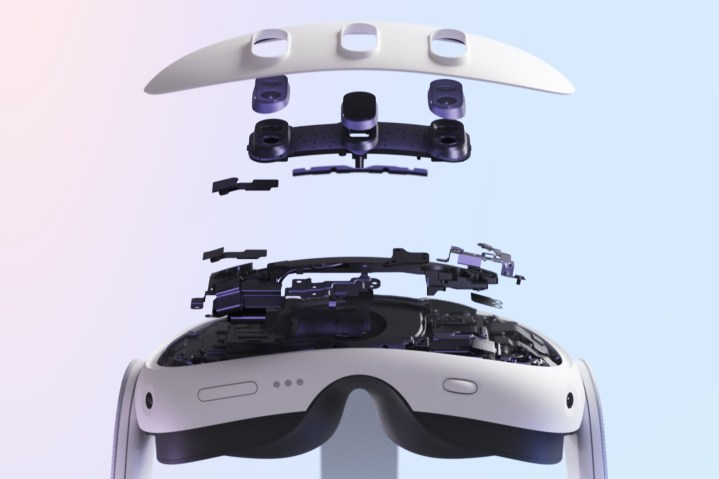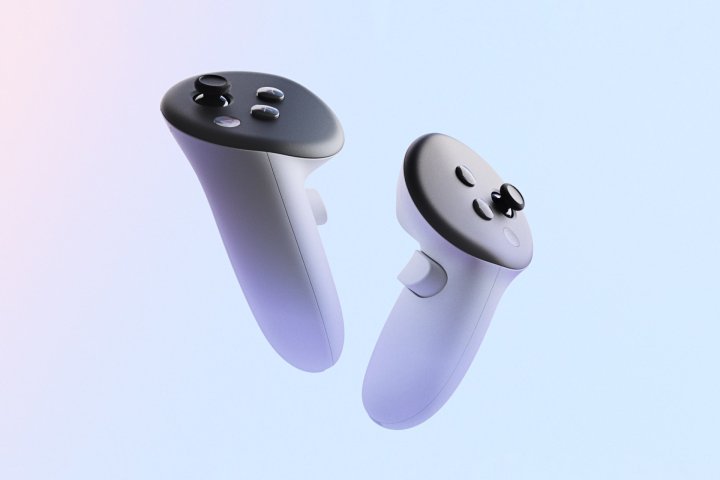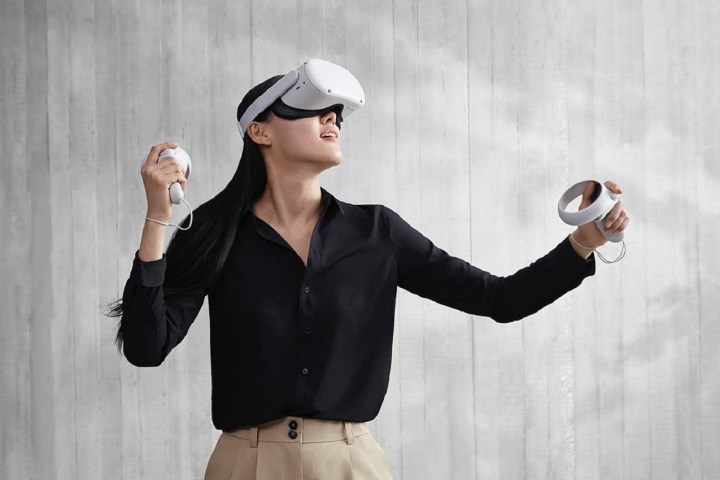
Meta’s Quest 3 is the newest and best VR headset for standalone gaming, but Meta is still selling two other models, the budget-priced Quest 2 and the premium Quest Pro. The Quest 2 is the lowest-cost VR gaming device, but is it good enough? And is the third-generation Quest really worth the extra expense?
Let’s compare the Meta Quest 2 to the Quest 3, sizing up performance, display and lens quality, mixed reality capabilities, and more. Being better isn’t always good enough — you need the difference to be noticeable and worth the significant price increase. Before diving in, make sure to pull up our full Meta Quest 3 review if you want all the details.
What’s new in the Quest 3?
Meta continues to push affordable VR technology forward with the Quest 3. Everything the Quest 2 does, the Quest 3 does better. That comes at a higher cost. The Quest 3 starts at $500, 67% more than the $300 Quest 2, but half the price of the Quest Pro.
Meta’s Quest 3 headset isn’t meant to compete with Meta’s work-centric headset, but the Quest Pro’s lens technology inspired the design of the Quest 3. The image clarity is much improved, with a sweet spot of greatest sharpness thanks to the Quest 3’s pancake lenses.

The HTC Vive XR Elite and Pico 4, competing all-in-one VR headsets, also use pancake lenses. This is a trend that will continue, since the lenses are slimmer, lighter, and remove the blurring visible at the edges of the Fresnel lenses found in the Quest 2.
The Quest 3 also borrows a page from the Quest Pro to include color passthrough for better mixed reality. In fact, the Quest 3 has less distortion and higher resolution when using mixed reality. You’ll feel more immersed in a blend of your actual surroundings and virtual elements in games that take advantage of this feature. By comparison, the Quest 2 only has grayscale passthrough.
Meta’s latest headset has a resolution of 2064 x 2208 pixels per eye, exceeding the density of every other Meta Quest headset. That equates to 30% more pixels than the Quest 2. That’s only important if the processor can handle that large of an image, and the Quest 3 can.

The Quest 3 uses Qualcomm’s new Snapdragon XR2 Gen 2. Its GPU is twice as fast as the XR2 Gen 1 in the Quest 2, so a few more pixels won’t pose a problem. The extra performance can go toward adding more detail to graphics without reducing frame rates. The Quest 3’s power should result in better gaming.
VR gaming isn’t just about the visuals — audio is important too. Meta says the Quest 3 has 40% louder sound, with better clarity and richer bass.
The Quest 3’s depth sensor maps the room creating a guardian, reducing the time it takes to setup before the games begin.
The Quest 2 controllers have large rings at the front to help the headset track the location. Unfortunately, it’s easy to get carried away and crash two controller rings together when frantically fighting zombies in a Quest game like Resident Evil 4 VR. That spoils the immersion and sometimes damages a controller.

The Quest Pro comes with Touch Pro Controllers with much-improved tracking, a more compact design that loses the rings, and advanced haptics. The Quest 3’s Touch Plus Controllers are not quite as advanced in tracking capabilities, but Meta included better haptics.
How the Quest 2 and 3 are alike

Meta’s Quest 3 is shaping up to be one of the best VR headsets available, and one of the least expensive. That’s a powerful combination. The only way to beat it is to offer many of the same features for significantly less.
That’s where the Quest 2 comes in. For $300, the Quest 2 lets you play the same games and run the same apps that the Quest 3 can. Meta designed these models for VR gaming, and they have a large and growing library of fun and immersive titles.
They’re lightweight and inexpensive compared to other VR headsets, yet pack a punch with a 120Hz refresh rate, depth of field tracking of the headset, wide field of view, and more.

Although the Quest 2 is an older model, Meta has been updating it nearly every month with improvements that have helped retain its position as thee best budget option for an all-in-one gaming system that can be connected to a PC for more intensive Steam VR gameplay.
The Quest 3 will also receive regular updates and connects to your PC for Steam VR games, but in higher resolution and with faster Wi-Fi capability.
The Quest 2 is still a versatile and valuable VR headset, while the Quest 3 boasts stronger specifications at a higher price.
Quest 3 or Quest 2: Which is right for you?

If you can afford the Quest 3’s higher $500 price, it’s absolutely worth the money and is more future-proof. The Quest 3 has sharper and clearer graphics, and a much faster processor to handle crisp, detailed imagery, while sustaining lag-free gaming.
Every Meta Quest 2 game runs on the Quest 3, so you won’t need to wait for titles. Meta’s latest headset has great mixed reality features and every game that supports passthrough view will automatically look much better in color on the Quest 3, compared to the low-resolution grayscale environment the Quest 2 shows for passthrough.
If $500 is too big of a stretch or if you need to buy multiple VR headsets, the Quest 2 is a bargain at $300. If cost is the only consideration, the Quest 2 is the best VR headset you can buy for $300. Other standalone VR headset manufacturers can’t compete at this price point.

It’s hard to go wrong with either. The low prices of Quest 2 and 3 headsets are a testimony to Meta’s dedication to VR and a metaverse future.
As unlikely as virtual worlds sounded a few years ago, Apple’s upcoming Vision Pro headset validates Meta’s efforts. Nvidia has invested in its version of the metaverse as well.
If you’ve been interested in VR, but haven’t committed to a headset, now might be the perfect time to start exploring what it’s all about, and the Meta Quest 3 and Quest 2 remove the risk of a big hardware investment.
Editors’ Recommendations
Services Marketplace – Listings, Bookings & Reviews
